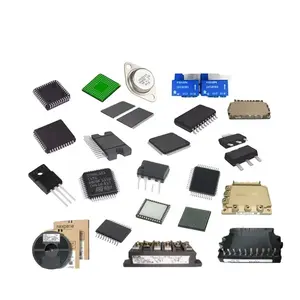
Resistor Resistors FAC Bifilar Sliding Ripple Error Free Braking Wirewound Resistor 100 Ohm Resistors

Resistors Mu Star Electronic Components New Original Stock Integrated Circuit Capacitors And Resistors




















Resistors are fundamental components in electronic circuits, serving as devices that regulate current flow and voltage levels. These components come in various forms, each designed to fulfill specific roles within electronic systems. Understanding the nuances of resistors, from color coded resistor identification to the intricacies of resistors in series and parallel, is crucial for professionals in the electronics field.
The world of resistors is diverse, with each type tailored for particular applications. Variable resistors and potentiometers are widely used in tuning and calibration settings, allowing for adjustments in resistance to fine-tune electrical circuits. Force sensing resistors, on the other hand, are employed in touch-sensitive applications, changing resistance with applied pressure. In power systems, neutral grounding resistors play a critical role in protecting against electrical faults.
Designing electronic circuits often involves configuring resistors in specific ways to achieve desired outcomes. Resistors in parallel are used to increase circuit stability and distribute power evenly, while resistors in series help in creating voltage dividers. For those looking to understand the impact of these configurations on circuit behavior, calculating parallel resistance is a fundamental skill.
Resistors are characterized by resistance value, tolerance, and temperature coefficient. The resistance value is often denoted by a color coded resistor system, which uses bands of colors to represent different values and tolerances. This coding system is essential for quickly identifying resistor specifications without the need for electronic testing.
Certain resistors are designed for specific environmental responses. Thermistors, for instance, vary their resistance with temperature changes, making them ideal for temperature sensing applications. Light dependent resistors, also known as LDR sensors or ldr light dependent resistors, adjust their resistance based on light intensity, which is essential for devices that react to changing lighting conditions, such as automatic night lights or light-activated alarms.
Selecting the appropriate resistor for a given application requires a deep understanding of the component's specifications and the circuit's requirements. It is important to consider the resistor's power rating, resistance value, and durability under various environmental conditions. While Alibaba.com facilitates the connection between buyers and suppliers of electronic components, including a vast array of resistors, it is the responsibility of the buyer to ensure the chosen resistor meets the necessary criteria for their specific application.